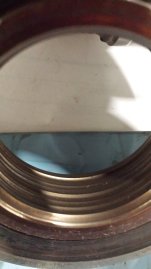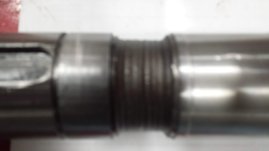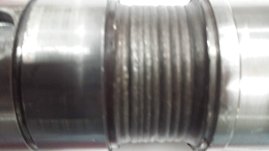guythatbrews
Titanium
- Joined
- Dec 14, 2017
- Location
- MO, USA
Without actually having this thing in my hand, I am as sure as can be the finish pattern is chatter and severe chatter at that. It's bad enough that the size will vary through the bore and be the actual size will be difficult to determine. If the shop that made this was ok with this severe chatter, it's not much of a stretch to say they'd be ok with missing the tolerance.
Dont overthink this and look for the least obvious solution! The bearing spinning in the housing didn't make that pattern. If someone is saying it did they are totally full of crap! Ask them how the bearing made the chatter in the groove.
Lastly there is simply no way the installed fit was .002 press and now it is .003 clearance!
Dont overthink this and look for the least obvious solution! The bearing spinning in the housing didn't make that pattern. If someone is saying it did they are totally full of crap! Ask them how the bearing made the chatter in the groove.
Lastly there is simply no way the installed fit was .002 press and now it is .003 clearance!




